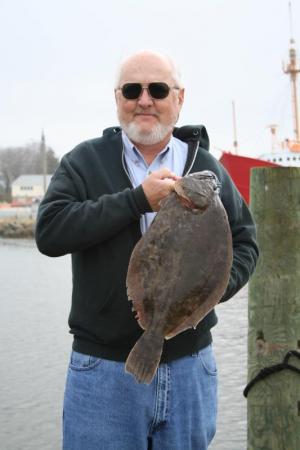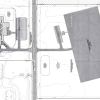So far, the only keeper flounder that I know of caught out of Delaware waters was taken from the surf close to Cape Henlopen by Julie Stevenson last Saturday. Julie was using a clam for bait. Not exactly my first choice for attracting a flounder.
Down in Ocean City, Md., Scott Lenox has been catching four-fish flounder limits to 21 inches drifting the Thorofare with Dale Timmons’ deadly double rigs baited with pink Gulp! four-inch swimming mullet. My friend Bob Baker called me to report that he heard of some good flounder fishing behind the Virginia Barrier Islands out of Wachapreague. I also had good reports of flounder at the Chesapeake Bay Bridge-Tunnel. Sooner or later, they have to show up here, and I think it will be soon rather than later.
Last week was another one with terrible weather. Tuesday was decent, but the rest of the week was either rain, wind or both. This weekend may be fishable, and at least the temperatures will be warm.
Flounder like shallow water with a dark bottom in the spring because this type of structure heats up quicker than deep water or a sandy bottom. As a general rule, outgoing water is the best time to flounder fish in the spring, as the sun has had time to heat the water on the flood. I plan to arrive at my fishing destination about two hours before the high tide and fish until two hours into the ebb. On the high, I will work the shallows like you find between White’s Creek and Southshore Marina or in Delaware Bay along Beach Plum Island. Once the water starts out, I move to creek mouths or marsh drains and then to the edges of channels. Flounder are ambush feeders, and you have to present your bait as if it is coming along in the current moving past their hiding place.
The ideal time for high tide is early in the morning before boat traffic drives the flounder off the shallows. Even when you have this ideal condition, you must use your head and not run over the flats at high speed, thereby defeating your purpose. After making a drift, go around the shallow area before beginning the next drift. Do not run back over your fishing grounds.
The Lewes-Rehoboth Canal is a special place that is more forgiving to boat traffic. You always want to drift with the current, but at times the wind will be strong and push you across the canal instead of up or down. This is where an electric trolling motor comes in handy. Use it to correct for the wind and keep your boat working along the channel edge.
You may also use your outboard motor to do the same thing. Bob Baker is the master of this technique. He works his motor the whole time he is fishing and keeps the boat exactly where he wants it.
As for flounder bait, live minnows are always a good choice. Over the past few years, I have done very well using a jighead with a Gulp! crawfish in orange. I think the orange color combined with the Gulp! scent draws the flounder to the bait. This year I plan to try the new FishBites. I know they work on black sea bass and hope they will do a job on flounder.
Fishermen without a boat are at a disadvantage. There are a few locations where you can fish with at least a chance of catching a flounder.
The Town Dock in Lewes is one of the better flounder fishing spots. Cast your bait or lure toward the Savannah Road bridge and let the current carry it back along the bottom.
The Old Boat Ramp at Canalfront Park in Lewes is another decent flounder fishing location. Here too you must keep your bait or lure moving by casting into the current and working the rig back across the canal.
Fishing the surf for flounder also requires casting and retrieving your bait or lure. Most of the time, flounder will be right in the wash or just outside where the waves break. A bucktail cast to the area just behind the first wave and then allowed to tumble about while you keep some control by cranking in the line will imitate a baitfish caught up in the surf. The flounder will simply engulf the lure and become a weight on the line. I have actually caught flounder that were flopping on the sand when the waves receded.
Our flounder regulations have remained the same in 2020 as they were in 2019. We will be allowed four fish per day with a 16.5-inch minimum size. Good luck!






















































